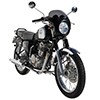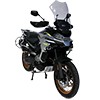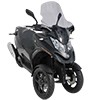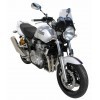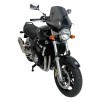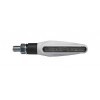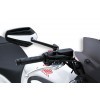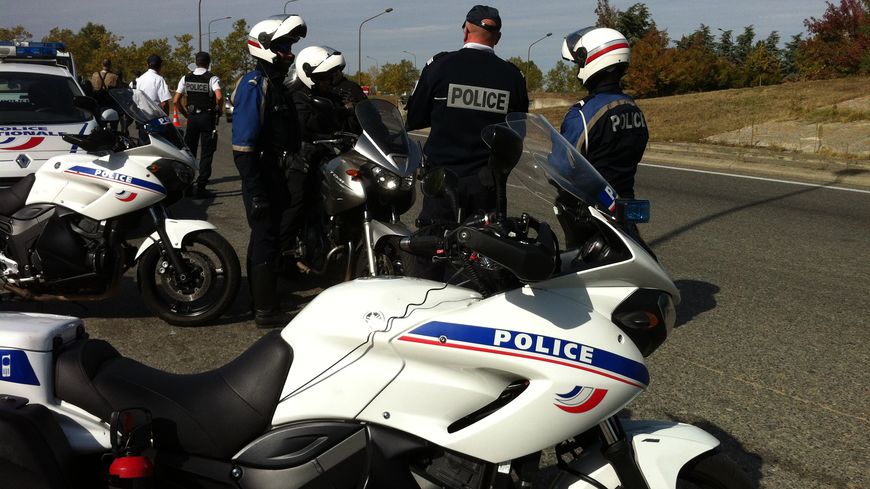Penalties point
Depending on the type of offence and any aggravating features associated with the offence, you will get a number of penalty point. The following table will show you the number of points associated with each kind of offence.If you accumulate 12 or more penalties points within a three year period, the court must disqualify you for a minimum of six months, unless you can establish exceptional hardship or some other special mitigation
Following the Road Traffic (New Drivers) Act 1995, every rider who passed their driving test since 1st June 1997 have two-year probationnary period from the date that they acquire their full licence . Within 2 years if you accumulate 6 points, the DVLA will revoke it. It means that in order to drive again you 'll have to apply to the DVLA for a provisional driving licence, successfully pass the theroy and full driving test, and are bound by all the Provisional Driver requirements until you pass your test again.
Penalties point depends on the type of offence and any aggravating features associated with the offence, you will get a number of penalty point. The following table will show you the number of points associated with each kind of offence. If you accumulate 12 or more penalties points within a three year period, the court must disqualify you for a minimum of six months, unless you can establish exceptional hardship or some other special mitigation Following the Road Traffic (New Drivers) Act 1995, every rider who passed their driving test since 1st June 1997 have two-year probationnary period from the date that they acquire their full licence . Within 2 years if you accumulate 6 points, the DVLA will revoke it. It means that in order to drive again you 'll have to apply to the DVLA for a provisional driving licence, successfully pass the theroy and full driving test, and are bound by all the Provisional Driver requirements until you pass your test again. Here are some examples of offences that are unfortunately quite common among motorcyclists. For each offence, we will tell you the risks involved and hope that this will be able to stop deterring you if it has not already been done.
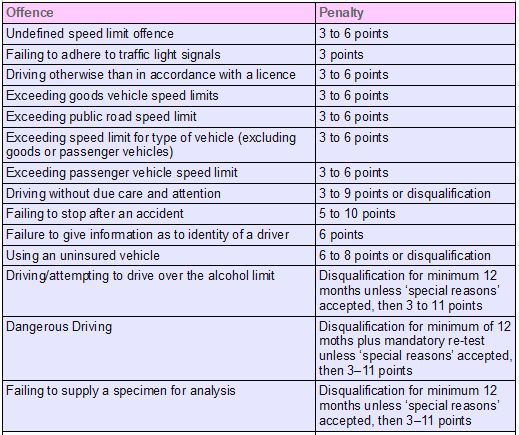
1) Careless of dangerous riding
According to the courts , there are many examples of dangerous riding (Failing to stop for police, ignoring the speed limit, agressive riding...) According to Section two of the Road Traffic Act, it’s a criminal offence for you to dangerously drive or ride a mechanically propelled vehicle in a public place.If your riding has caused the death of another person, then you have committed the offence of death by dangerous driving. In 2003 the maximum sentence for this was increased from 10 to 14 years, meaning that you could potentially be faced with a lengthy prison sentence, alongside a two year driving ban and a mandatory retake of the driving test to regain your licence.
There are two related offences – causing death by careless driving/riding and causing death by careless driving while under the influence of drugs or drink driving. If you are found to have caused death by careless riding alone, the sentences are less severe. The maximum custodial sentence is five years along with a mandatory one year driving disqualification or three to 11 penalty points. Investigations into such matters are carried out by experienced police officers and if accused, the rider will need expert help.
2) Driving or riding without a licence
Under section 87 of the Road Traffic Act 1988, driving without a full and appropriate driving licence can lead to three to six points on your licence and a potential fine of up to £1,000. Additionally, if you drive without both a licence and insurance, you can be given a further six to eight penalty points on top of the points you received for the initial offence, and a fine of up to £5,000.The punishments you can face therefore are the following:
-Penalty points on your licence
-Fines of up to £5,000
-Face a ban of acquiring a driving licence for a period of time
-Additional costs from potential car insurers
-Difficulties finding employment in certain job fields
-Paying for any damages you may have caused
3) Driving with dangerous or defective tyres
Driving with dangerous or defective tyres also puts drivers at risk of a fine of up to £2,500 and three points on their license.That is per tyre, so four illegal tyres could mean a fine of £10,000 and 12 penalty points.
4) Driving or riding while disqualified
Riding while disqualified is a serious offence that will lead to you being arrested if you are caught and being taken straight to the police station, interviewed and held in a cell until you are either bailed or held for court, and could lead to a prison sentence. Nowadays the Police have the technology to track you and they can tell if your motorcycle or car is insured, MoT’d and if you have a valid licence.In court the punishment given depends on the circumstances of the case, but a first time offender who pleads guilty could be faced with community service, or a curfew along with an order for prosecution costs and a further extension to your disqualification from riding.
5) Riding or driving without an MoT
An annual MOT ensures that the motocycle adheres to the minimum road safety and environmental standards.The DVLA takes monthly checks on the status of each vehicle, and if it finds any without an MOT, those details are passed on to the Automatic Number Plate Recognition (ANPR) of police vehicles and road-side cameras that can identify you.
The penalty usually suffer a fixed £60 penalty notice, a fine of up to £1,000, six to eight penalty points on your licence, the potential impounding of your machine and invalid cover of your insurance
6) Jumping a red light
Unless certain emergency vehicles are exempted, in general the driver or rider’s obligation have to stop at traffic lights unless they are on green. If the amber light is showing, then you must stop unless you have already crossed the white stop line or if you are too close to stop the vehicle safely, and without causing an accident.if you fail to stop for a red light, The penalty is likely to be a fine and three penalty points. That will be the case if you accept a fixed penalty. If the case goes to court, there’s discretionary power to disqualify you, and the fine could be up to £1,000.
In some cases you may be offered a ‘driver awareness course’ as an alternative, which will involve attending a re-training course for half of a day, which usually costs between £85 and £110.
7) Driving without a helmet
According to new legislation for England and Wales, riding a motorbike without a helmet carries a maximum penalty of £500 yet could now be punished with a maximum fine of £2,000 although this is still some way short of the maximum penalty for being drunk and disorderly in a public place which could carry a maximum penalty of £4,000.8) Number Plate Offences
Incorrect number plate offences can lead to fines of up to £1000 for each specific number plate offence, a failed MOT and the loss of the plate (if it is a personal plate you will not get back the money you paid for it). The Driver and Vehicle Licensing Agency (DVLA) and traffic officers are cracking down on number plate offences so now is the time to check your plates conform.There are sometimes defences available for this type of offence but misleading or lying to the courts can lead to larger fines. Police cameras are regularly used to catch drivers with dirty numbers plates or plates with incorrect spacing.













